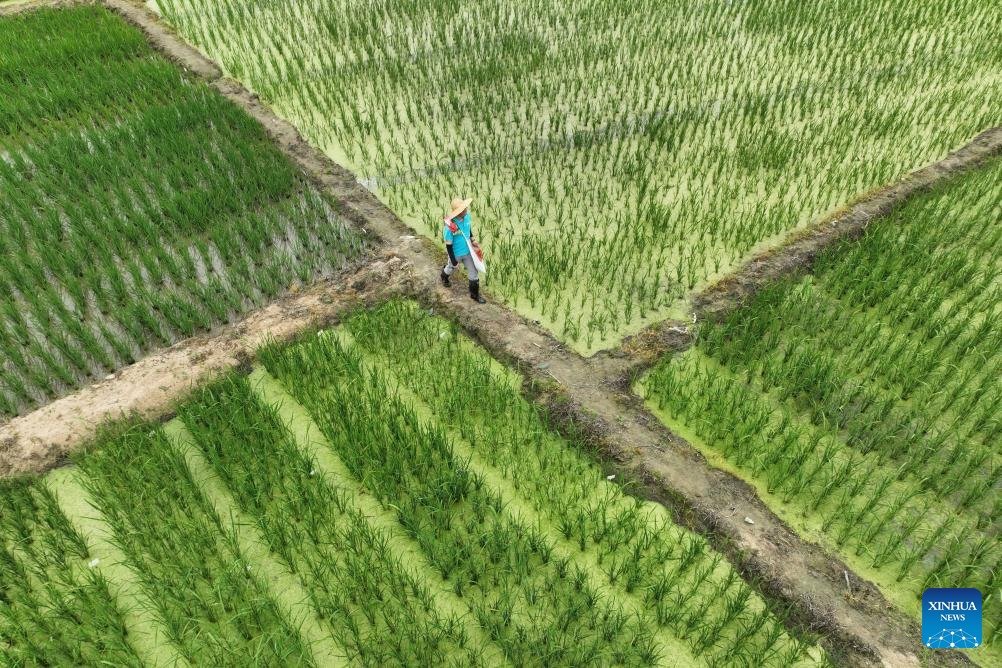
This aerial drone photo shows Zhang Shugen, a researcher with the Qingdao Saline-Alkali Tolerant Rice Research and Development Center (QSTRRDC), patrolling a rice field in the Nanfan breeding base in Sanya, south China's Hainan Province, Feb. 14, 2025. Thanks to its warm climate in winter and spring, which helps shorten the breeding cycle, Nanfan has been a renowned national breeding base since the 1950s. Researchers from the QSTRRDC cultivate a new season of saline-alkali tolerant rice from every October to April of the next year here, in quest of high-quality seedings for better use of saline-alkali farmlands in the country. (Xinhua/Zhang Liyun)
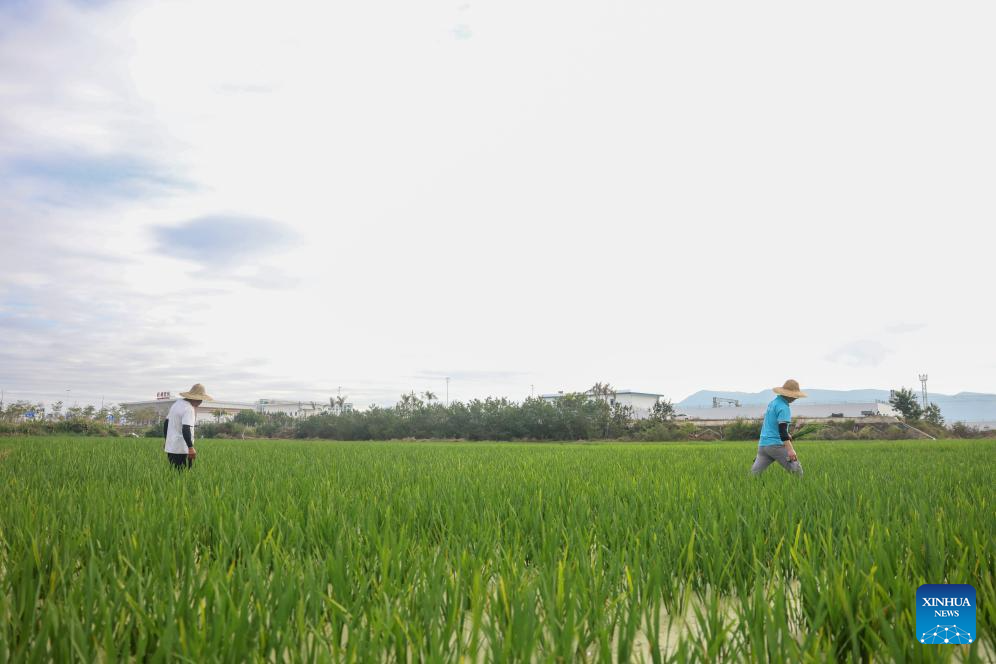
Zhang Shugen (R), a researcher with the Qingdao Saline-Alkali Tolerant Rice Research and Development Center (QSTRRDC), weeds in a rice field in the Nanfan breeding base in Sanya, south China's Hainan Province, Feb. 14, 2025. Thanks to its warm climate in winter and spring, which helps shorten the breeding cycle, Nanfan has been a renowned national breeding base since the 1950s. Researchers from the QSTRRDC cultivate a new season of saline-alkali tolerant rice from every October to April of the next year here, in quest of high-quality seedings for better use of saline-alkali farmlands in the country. (Xinhua/Zhang Liyun)
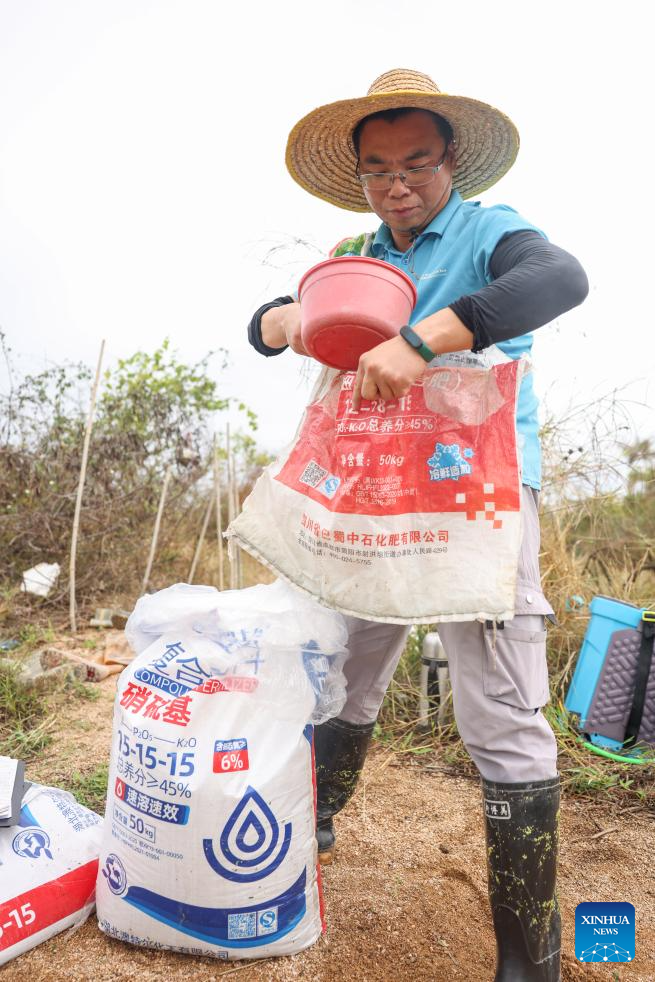
Zhang Shugen, a researcher with the Qingdao Saline-Alkali Tolerant Rice Research and Development Center (QSTRRDC), prepares for fertilizing operation in the Nanfan breeding base in Sanya, south China's Hainan Province, Feb. 14, 2025. Thanks to its warm climate in winter and spring, which helps shorten the breeding cycle, Nanfan has been a renowned national breeding base since the 1950s. Researchers from the QSTRRDC cultivate a new season of saline-alkali tolerant rice from every October to April of the next year here, in quest of high-quality seedings for better use of saline-alkali farmlands in the country. (Xinhua/Zhang Liyun)
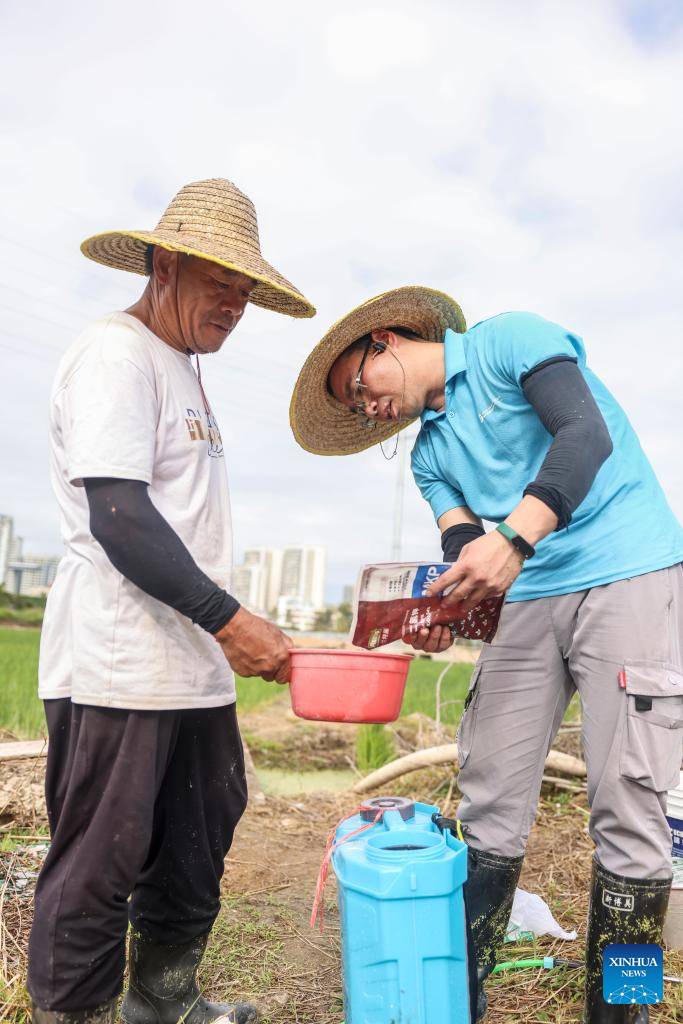
Zhang Shugen (R), a researcher with the Qingdao Saline-Alkali Tolerant Rice Research and Development Center (QSTRRDC), concocts plant growth regulators for experiments on rice in the Nanfan breeding base in Sanya, south China's Hainan Province, Feb. 14, 2025. Thanks to its warm climate in winter and spring, which helps shorten the breeding cycle, Nanfan has been a renowned national breeding base since the 1950s. Researchers from the QSTRRDC cultivate a new season of saline-alkali tolerant rice from every October to April of the next year here, in quest of high-quality seedings for better use of saline-alkali farmlands in the country. (Xinhua/Zhang Liyun)
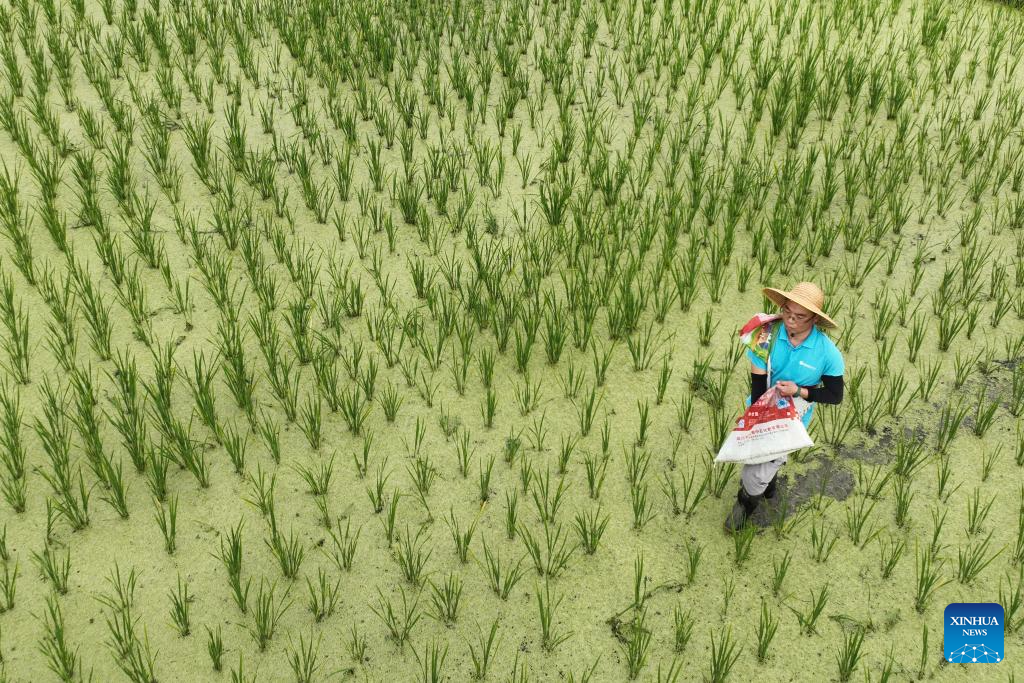
This aerial drone photo shows Zhang Shugen, a researcher with the Qingdao Saline-Alkali Tolerant Rice Research and Development Center (QSTRRDC), fertilizing a rice field in the Nanfan breeding base in Sanya, south China's Hainan Province, Feb. 14, 2025. Thanks to its warm climate in winter and spring, which helps shorten the breeding cycle, Nanfan has been a renowned national breeding base since the 1950s. Researchers from the QSTRRDC cultivate a new season of saline-alkali tolerant rice from every October to April of the next year here, in quest of high-quality seedings for better use of saline-alkali farmlands in the country. (Xinhua/Zhang Liyun)
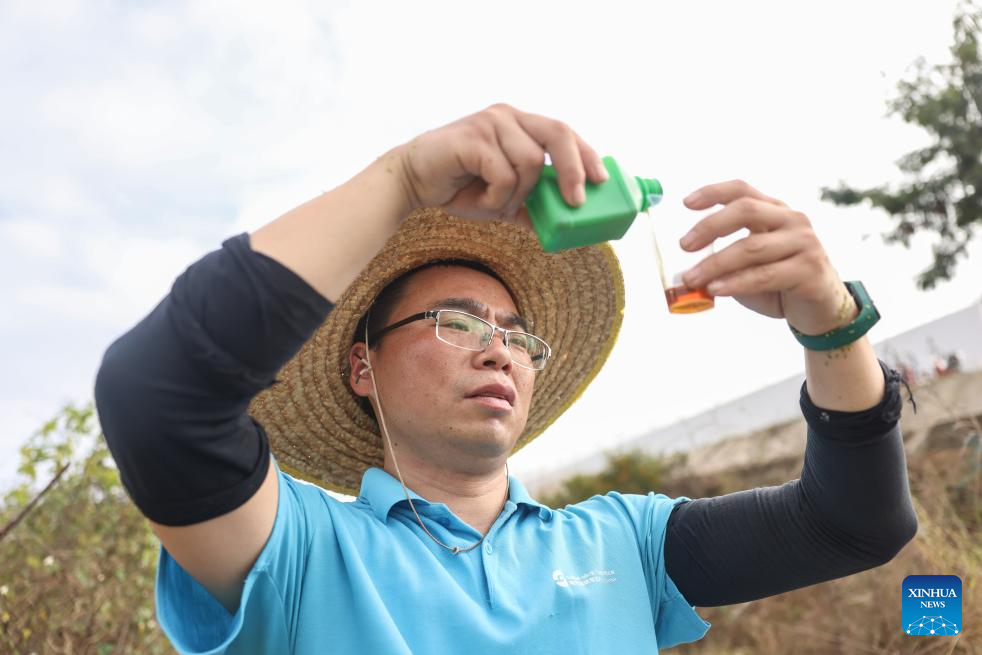
Zhang Shugen, a researcher with the Qingdao Saline-Alkali Tolerant Rice Research and Development Center (QSTRRDC), concocts plant growth regulators for experiments on rice in the Nanfan breeding base in Sanya, south China's Hainan Province, Feb. 14, 2025. Thanks to its warm climate in winter and spring, which helps shorten the breeding cycle, Nanfan has been a renowned national breeding base since the 1950s. Researchers from the QSTRRDC cultivate a new season of saline-alkali tolerant rice from every October to April of the next year here, in quest of high-quality seedings for better use of saline-alkali farmlands in the country. (Xinhua/Zhang Liyun)



